Babylonian Mythology & Religion: The Empire
Looking for a complete introduction to Babylonian mythology & Religion in just a few minutes? You’ve come to the right place! Read on !
The Assyro-Babylonian religion
Beliefs and rituals in Mesopotamia
In spite of the name which one agreed to give to it, the Babylonian mythology religion goes back, in its origins and in its constitution, to a time well anterior to the blooming of the Babylonian and Assyrian cities.
From the beginning of the third millennium B.C., there existed in the lower basins of the Tigris and the Euphrates a flourishing civilization, due to the interpenetration of two neighboring and rival peoples: the Akkadians and the Sumerians.
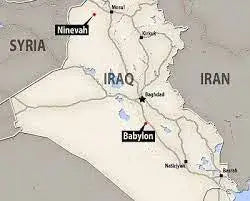
The country of Sumer, situated on the edge and at the bottom of the Persian Gulf, which then advanced much further inland, had as its capital Lagash; the cities of Eridu, to the south, and Nippur, to the north, marked its extreme limits; as other cities, we must mention Uruk (or Erech), Larsa, Ur.
The Sumerians had probably come from south or central Asia. The country of Akkad, located immediately north of the country of Sumer, was populated by Semites, probably originating from Arabia or northern Syria. Its capital was Agadeh (or Akkad), and its main cities were Borsippa, Babylon, Kish, Kutha and Sippar, moving from south to north.

The part attributable to each of these peoples in the development of civilization is complex. In the religious order, which alone occupies us here, it seems that the religion of Sumer-Akkad is first of all that of the Sumerians, who in any case have provided a rich mythological base.
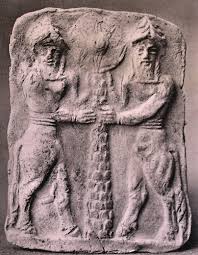
The Babylonian religion would thus result from the Semitization of a primitive Sumerian base. However that may be, there can be no doubt that there was reciprocal penetration between the religions of Sumer and Akkad. Without doubt, each city venerated its own deities, but it also welcomed those of neighboring cities.
Moreover, the conquerors, when they subjected a region, implanted their gods there. These then ended up identifying themselves with the local gods; from there assimilations or, failing that, filiations, relatives.
It is from this mixture of Akkadian and Sumerian pantheons, completed by the contributions of later periods, that Babylonian mythology were formed.
The representation of the gods mixes zoomorphism and anthropomorphism in three different ways, according to the part that takes their animal or human character:
- The divinities could have been conceived simply in the form of animals, good or bad, useful or fearsome to humans: the bull, the lion, the large caprids. But these animals are represented in human attitudes: a relief shows a bull rowing in a boat or leaning on two small lions that he maintains by his front legs.
- One could also envisage deities in the form of half-animal half-human entities. Some characters of the Babylonian glyptics, for example, are represented with a man’s bust ending in a long snake’s tail, or having shoulders from which snakes are born. However, this tendency was, in Mesopotamia, much less represented than in Egypt.
- Finally, the gods appear as human beings. But they are then flanked by an animal attribute. Adad, the god of lightning and storms, is accompanied by his bull; Ishtar, goddess of fertility and also of war, by her lion and in some countries by the dove, etc.
The animal/human duality of the gods is also superimposed on the male/female duality. The male and female principles of fecundity thus appear linked in the primitive god of Sumer: Enlil and his parèdre Ninlil, who later became Ishtar with all her attributes.
But while these divine male and female principles, objects of a cult in the whole of former Asia, were adored under this aspect in Asia Minor for example, Mesopotamia granted rather to the male god the character of divinity of the elements whose action ensures the reproduction and the fecundity.
Ishtar, on the other hand, kept her aspect of goddess of fertility and preserved her place during the development of the Assyro-Babylonian pantheon.

When the cities of old Mesopotamia were founded, each city had its own god; whatever his name was, his attributes remained more or less the same; sometimes it was his character of god of storms and beneficent rain that dominated, sometimes that of luminous god, vivifying the universe by his warmth, sometimes his qualities of wisdom and knowledge of all things.
This god, to be the god-patron of the city, was not an exclusive god, he admitted at his sides the worship of other divinities.
Sometimes, the fame of the god of another city was such as the city raised a temple to him in addition to that of its local god; sometimes, when a city, following a happy campaign, acquired the hegemony on the neighboring cities, it annexed, in a way, the gods of its new subjects; It is thus that in a short time each city had several official cults without counting the particular cults that the inhabitants come from abroad could bring with them; nascent Assyria honors a god since a long time famous: Anu, but it makes room in the same sanctuary for an important deity from the West: Adad.
The Babylonian Mythology Pantheon
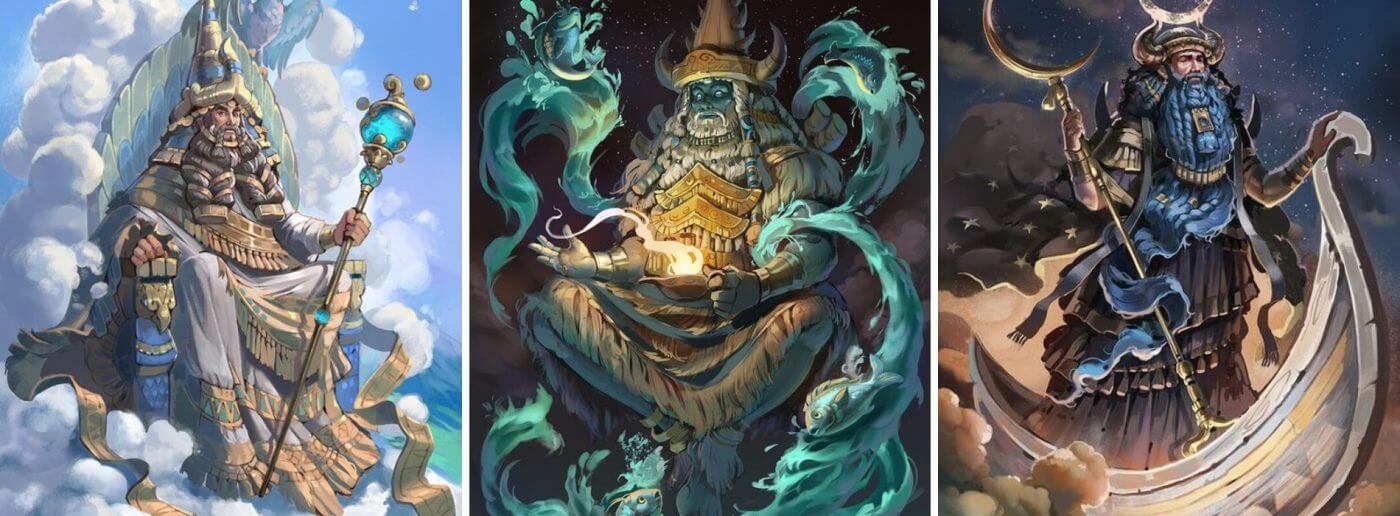
Thanks to the figurative representations we can conceive the time when the gods were represented by what remained their attribute: the god of the mountain, by the mountain; that or that of the vegetation by the grain or a shrub; those of war and destruction by terrible monsters or weapons; moreover the texts, by the epithets which they give to the gods, recall these primitive conceptions.
Here is the list of the principal divinities of the cities of ancient Mesopotamia, with for each god his predominant character. As dense as this pantheon was, one must take care that certain divinities have several names: the Sumerian name and the Semitic name, and that many gods can be brought back to a prototype of which they are only varieties.
Anu
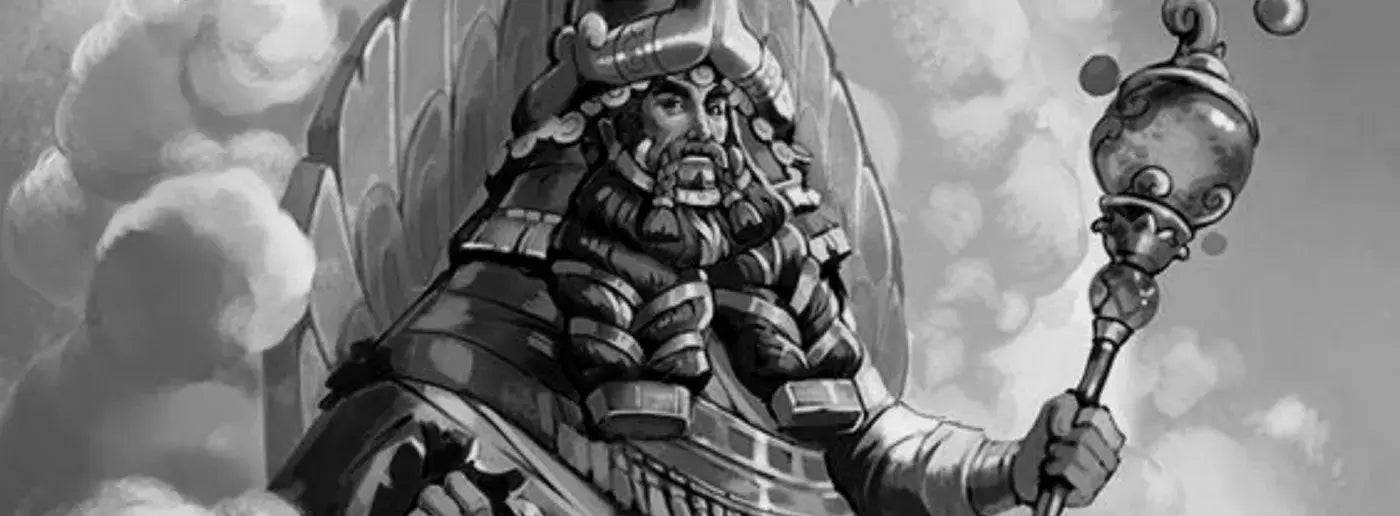
Anu is the ruler of the sky; he lives in the empyrean where he receives the gods when they need to hold a council; all power on earth comes from him and the insignia of earthly royalty are considered to be held by him. He is honored at Dêr, at Uruk, at Girsu, that is to say at Lagash, of which Girsu is the holy quarter.
Enlil
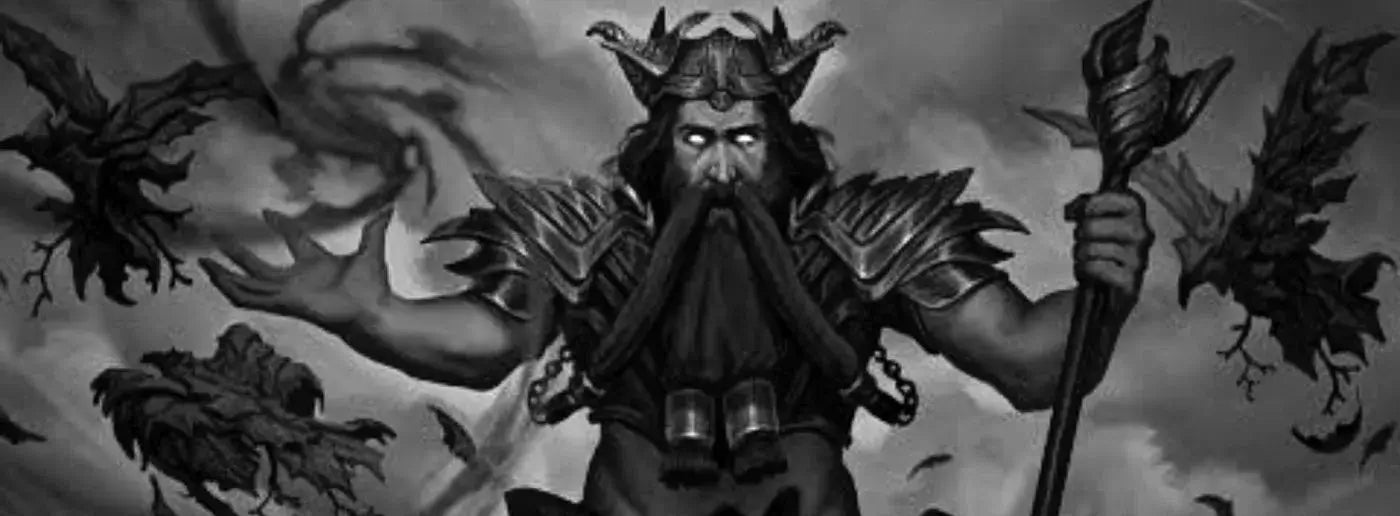
Enlil is an elemental god, commanding the hurricane and armed with the flood; Enlil is none other than Bel, which means “lord”, but the first of these names is Sumerian, the second Semitic; this god commands humans and fixes the destinies of the world; he was worshipped especially at Nippur.
Adad
Adad is a god of the elements; it is he who has the beneficial rain and the moderate flood without which there is no vegetation; but it is also he who is master of the lightning and the hurricane, of the storm and the sudden thunderstorm, which provokes the sudden flood devastating everything in its path.

He lives in the mountains and seems to have come from the West with the Semites; he is the god of the West par excellence, the same name: Amurru designates this region and the god himself. His cult spread in Assyria from the beginning of Assyrian history.
Êa
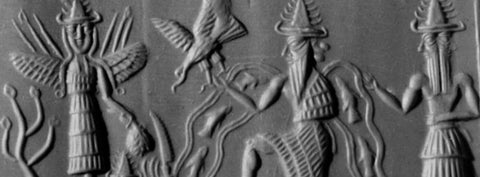
Êa is the god of waters, especially of the fresh waters of the great abyss which is under the Earth that the Assyro-Babylonians called the apsû. The earth was for them a round plateau surmounted by the celestial vault to which they attributed solidity; in short the human being was agitated inside a hollow half-sphere; the system floated on the waters of an abyss.
While Anu resided in his heaven beyond the starry vault we see, Ea reigned over the apsu. He was the lord of all industry and wisdom, and therefore the god of incantations and was invoked in times of illness. He was called the potter-god, because the Babylonians believed that the human being had been shaped out of clay by him. His favorite place of worship was Eridu, then on the Persian Gulf.
Sîn
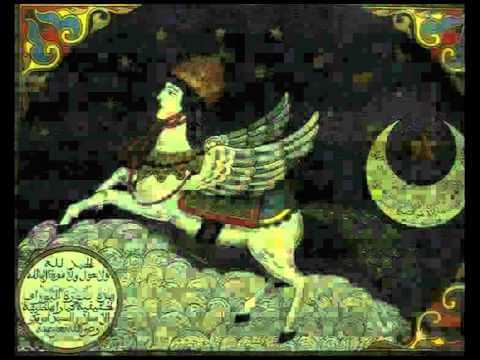
Sîn, god of the moon, named Nanna among the Sumerians, was venerated in Harran and Ur. His cult seems to have been earlier than that of the sun; the ancients seem to have been more struck by the movements of the moon; they measured the months according to its phases; Sîn commanded the time, and was considered, like Êa, to be infinitely wise.
Shamash
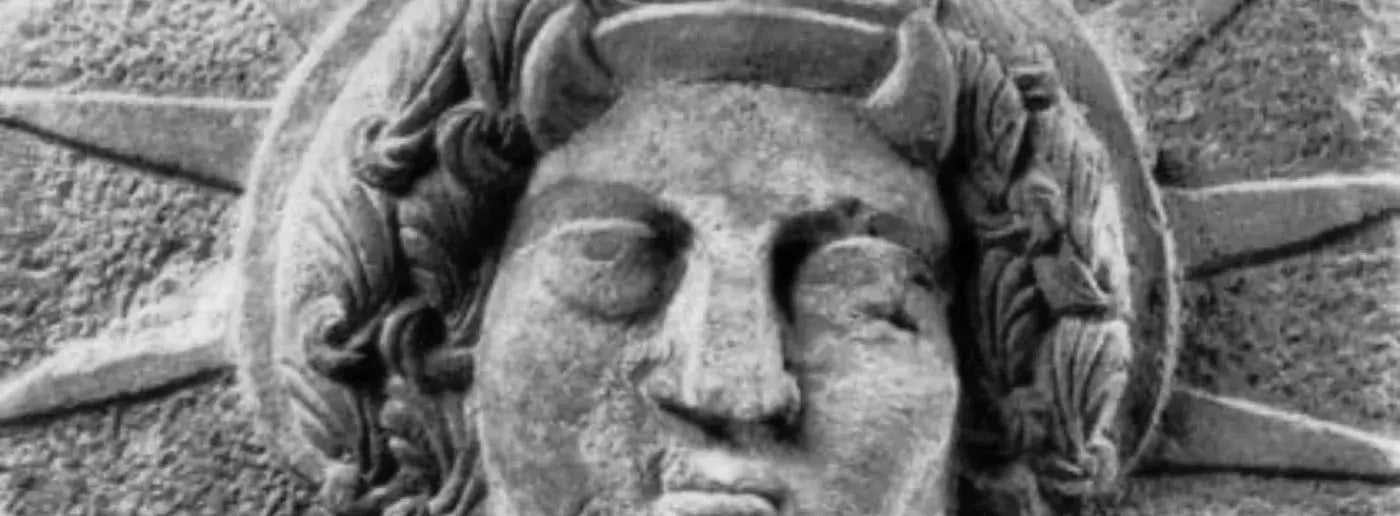
Shamash (named Utu in Sumer), son of Sîn, god of the sun in his beneficent capacity, was a warrior, but above all the god of justice; his light, in fact, dispels the darkness in which the wicked take refuge; he was honored at Sippar and Larsa.
NERGAL – The god who conquered hell
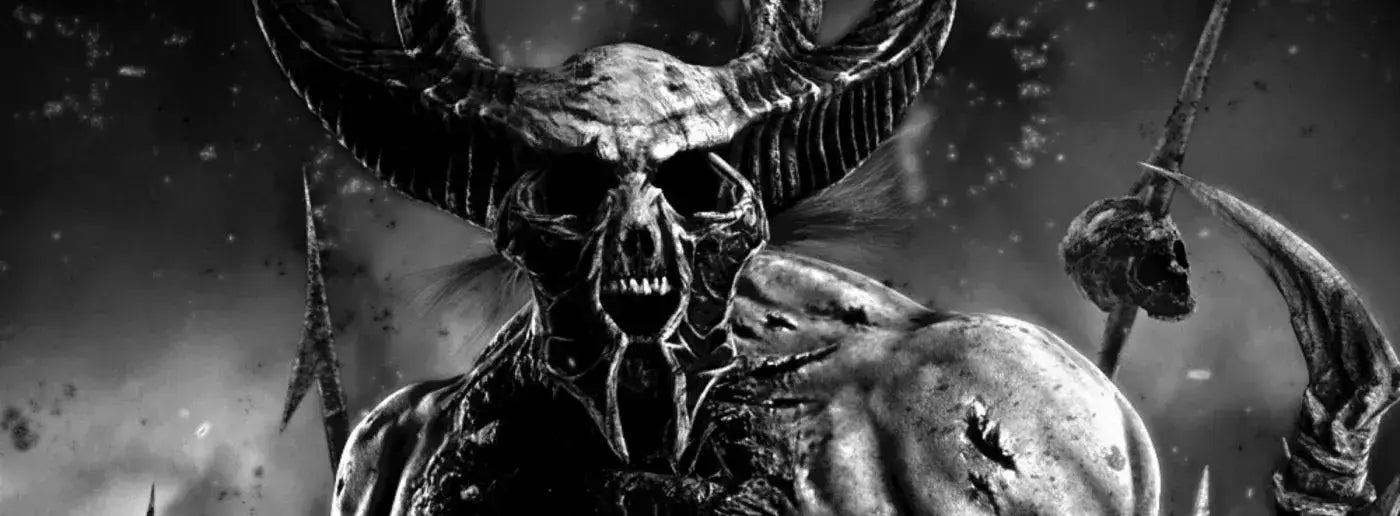
Nergal (also called Irra or Erra) who commands the kingdom of the dead. For the Assyro-Babylonians, the human being, after his life, went to the lower world, the arallu or aral, also called the “country from which one does not return”, where, without being unhappy, he led a miserable existence, dragging himself in the darkness and in the dust, having for subsistence only the funeral banquets offered by the living on his grave.
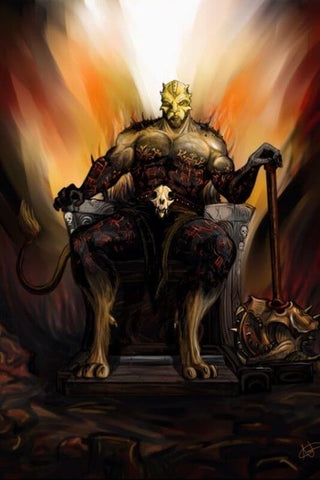
Hence the grim future that awaits those who are not buried or who leave no descendants; no one will give them funeral worship, and they will be perpetually hungry in the arallu.
Nergal is considered as the provider of his domain; he is the god of epidemics, of plague, and while Shamash was the beneficent sun, analogous to the luminous Apollo of the Greeks, Nergal is assimilated to the noon sun which, in Mesopotamia, is a plague drying up vegetation and striking animals and people with insolation.
His most famous place of worship was Kutha; his goddess Ereshkigal (= Lady of the Great Earth (= hell) in Sumerian), his wife, was worshipped in Kutah.
Ninurta
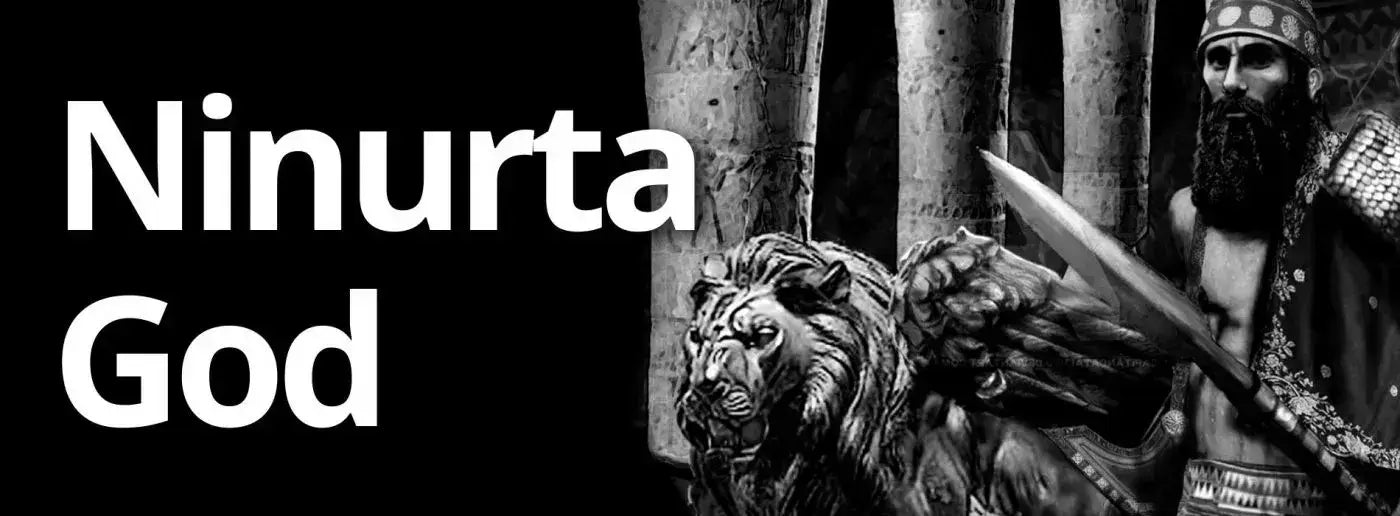
Ninurta, who replaced the god of Lagash, Ningirsu (the lord of Girsu) is the god of war; it is from him that the kings claim to hold their weapons; his temple was the Eninnu, at Lagash; later he was worshipped at Kalah. He had as his goddess Gula who presided over medicine; Gula assimilated Baü who had been the goddess parèdre of Ningirsu.
Marduk
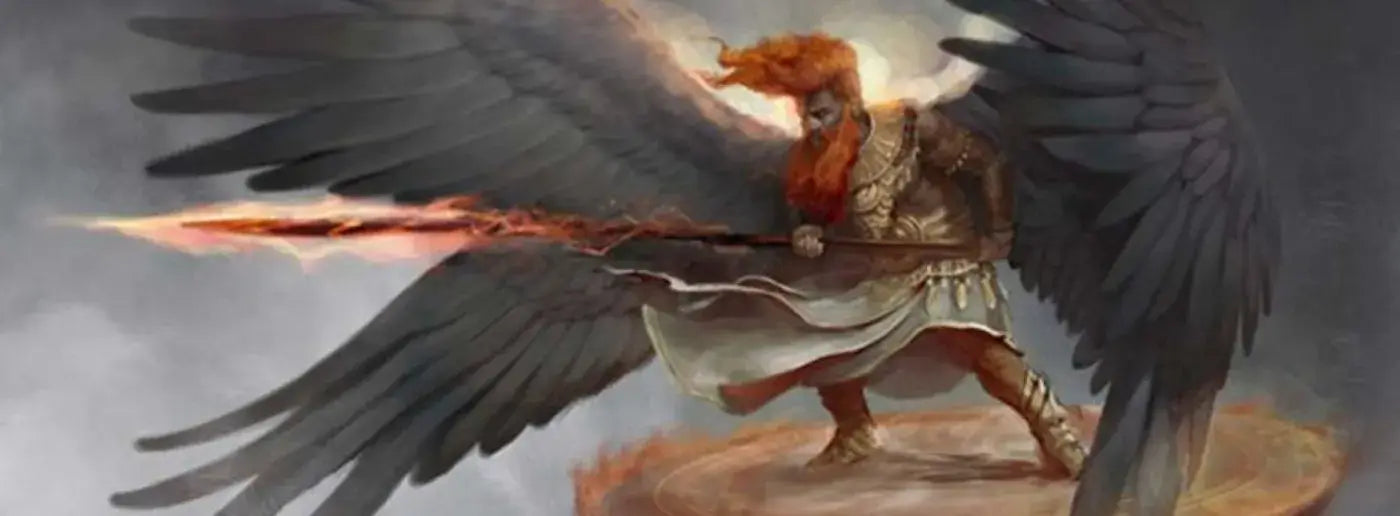
Marduk, son of Beel, owed his favor to the supremacy of the city where he was worshiped: Babylon. When the dynasty of Hammurabi had made Babylon the city without rival in Mesopotamia, it seemed that such a state could only have an exceptional god, and the priesthood of Babylon, whose interest it was besides, strove to place Marduk at the head of the gods; it was recalled that he had saved the gods at the time of their fight against Tiamat, the chaos, and that these, in return, had resigned the supreme power in his hands.
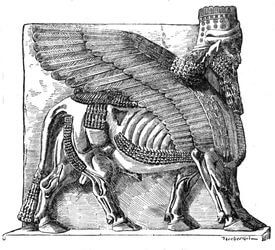
Little by little he usurped the attributes of his father Bel, and even some of those of other gods; like Ea, he was declared the creator of humanity; his wisdom and his knowledge of incantations were attributed to him; moreover, Marduk almost met the same fate as he had inflicted on his predecessors.
His son, Nabu, god of letters and possessor of the tablets of Fate, finally ousted him from the city of Borsippa, and the cult of Nabu was at least equal to that of Marduk in Babylon during the Neo-Babylonian Empire.
Assur
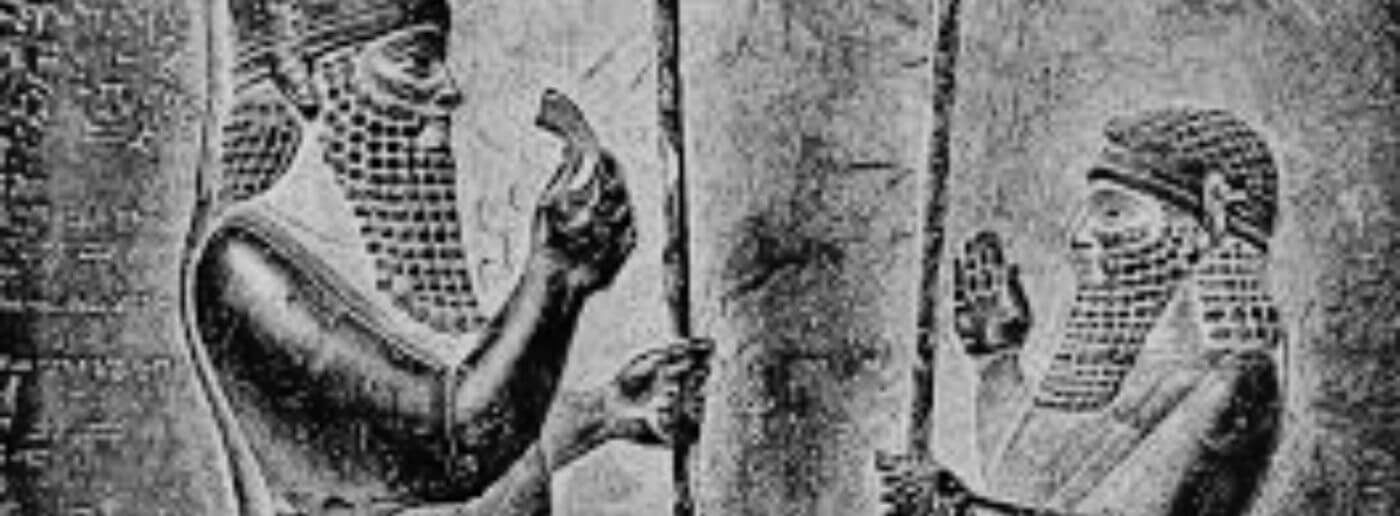
Assur enjoyed almost the same fortune in Assyria as Marduk in Babylon. The Assyrian clergy imagined a cosmogony assimilating Ashur to Anshar, one of the ancestors of Anu.
Master of the world, he was considered by the Assyrians, a conquering and fighting people, under his warlike aspect. He appeared, drawing the bow, on the standards that the Assyrians carried to war, and guided the kings of Assyria in battle.
The goddesses parèdres.
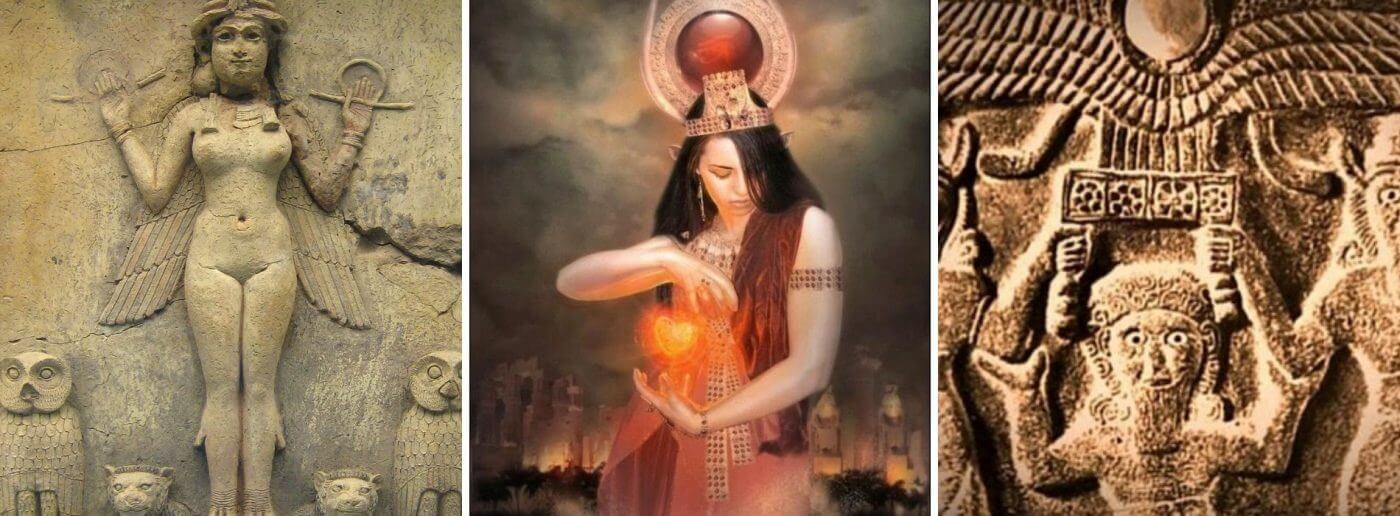
All these gods, as we have said, had a goddess paredra, some of them very obscure. Let us quote :
Tiamat (= Sea, in Akkadian) in the Poem of Creation, is the feminine part of the primordial couple, whose masculine part is Apsû.
Ninsshursag (Sumerian) / Ki (Akkadian), is the wife of An / Anu. She is the goddess of the Earth and mother of all living beings among the Mesopotamians, especially the demons and the Anunnaki.
- The Anunnaku (in Sumer) / Anunnaki (Akkadian equivalent). – This name would come from the Sumerian A-nunna(k) (= offspring of the divine prince, perhaps Enki / Ea). It is initially applied collectively to the principal Babylonian divinities (below them being the Igigu / Igigi). From the second half of the 2nd millennium, the term will rather designate the deities of Hell, and sometimes all the gods.
- Igigu (Sumerian) / Igigi (Semitic). – Collective name of the Mesopotamian gods. The term is sometimes applied more especially to those of the sky.
Innana / Ishtar. – None of these deities reached the fame of Inanna (= Lady of Heaven, in Sumerian) / Ishtar (in Akkadian), the great feminine principle of reproduction and fertility of all Western Asia.
Dès l’origine, elle syncrétisa plusieurs divinités ou au moins plusieurs traditions, car on la donne tantôt pour fille d’Anu, tantôt pour fille de Sin, et on la considère tour à tour comme déesse de l’amour et de la reproduction, mais aussi comme déesse des batailles; sous le premier aspect, elle était honorée à Uruk, sous le second à Arbèles. Les Assyriens, peuple de tradition guerrière, la connurent surtout comme dame des batailles et la donnèrent pour épouse à leur dieu guerrier Assur. Cette double nature d’Ishtar se retrouve dans les aspects de la planète qu’elle régissait (Vénus), qui brille le soir et aussi le matin.
Male / Female God in Babylonian mythology

All the male deities could be reduced to a single and absolute principle, the male and active principle of nature, of which they are only the multiform manifestations, and this explains the identity or even the confusion of their attributes, the similarity of the formulas by which they are invoked.
The male or female deities of the Assyro-Babylonian pantheon were thus only the personifications of the forces of the universe. They are the incarnations of the elements: the sun, the day, the vegetation, all that lives and sleeps, on the one hand; the moon and its uncertain radiance, the night, the winter, death, on the other hand.
A fable collected by Ctesias and Nicholas of Damascus puts into action this antagonism of the two principles that reign over the organized world; in this story, Adar-Sandan, considered as a solar deity, has as twin brother, his adversary, Sin or the moon; the enemy brothers receive the names of Parsondas and Nannaros. In the struggle that takes place between them, the latter manages to seize his rival by trickery; proud of his Herculean strength, he holds him captive, he makes him gradually fall to the last degree of degradation, even to the loss of virility.
This singular effeminization, which recalls the myth of Heracles spinning at the feet of Omphale, is only a euphemistic variant of the periodic death that the Sun undergoes, in the evening and in winter, when he burns himself, in the same way as the Greek Heracles, on the pyre of the sunset: such is the origin of the legend of the pyre of Sardanapalus.
After having been all-powerful, at noon in its diurnal revolution, at the summer solstice in its annual revolution, the day star always succumbs fatally to the attacks of the night star, deprived of its strength, which it will regain later, it is represented as having lost all virility, or as dead, to be resurrected soon; these are the two forms of the same fundamental fact. Adar-Parsondas falls every night to the power of his rival brother Sin-Nannaros who strips him of his strength and makes him half woman; the two brothers thus succeed each other in the domination of nature.
They alternate like the Dioscuri; and as the night is identical to death, the winner of the evening, considered by the Assyro-Babylonians as the elder, kills his younger brother whom he sends to the abode
of the dead.
The struggle begins again, every evening and every winter, an incessant struggle that will only end with the world. Here, taken as a whole, is the philosophical scope of the religion of the Assyro-Babylonians: one finds in it the germ of the doctrine of dualism which only developed and was progressively refined, until the day when it prevailed in an absolute way and imposed itself on the whole of the East. (F. L.).
The gods of fertility.

We must now say a few words about gods representing natural fertility principles;
- For example: the river, considered by the Assyro-Babylonians as a god and whose name is preceded by the ideogram of the divinity;
- For example, Tammuz (Dumuzi = “legitimate or faithful child” in Sumer, became Adonis in Syria), shepherd who became the lover of Inanna / Ishtar, whom he replaced in the underworld. God of Uruk; he became the Mesopotamian god of vegetation. His death is mourned and his resurrection is celebrated every year in autumn and spring. The fourth month of the year was named after him.
- Nisaba, goddess of grain.
As we can see, these deities are forces of nature; it is incidental that they take on moral qualities.
Genies.
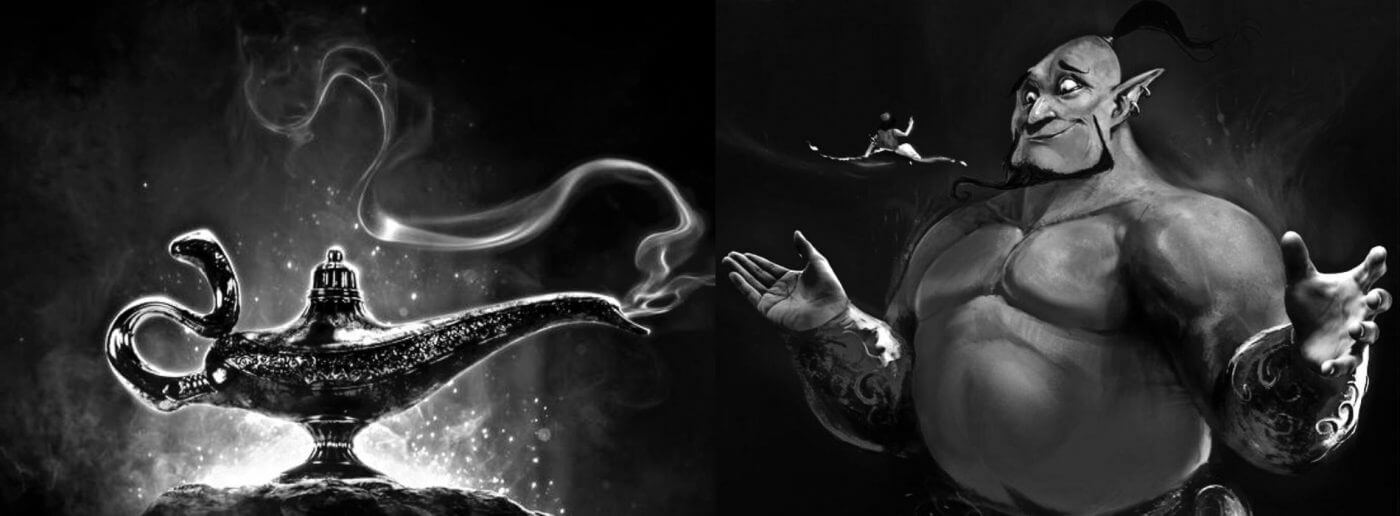
Below the gods, but nevertheless participating in their nature and sharing certain prerogatives with them, were the genies, the utokku divided into two groups: the good and the bad. Even more than the gods, they were closely involved in human life (La démonologie assyro-babylonienne).
The good geniuses, who were called shedu or lamassu, played the role of protectors for humans. They defended him against evil powers, brought his homage to the gods and attracted divine favor to him. They were seen standing at the door of the temples in the form of winged bulls with human faces.
But they did not limit themselves to this role of guardians of the sacred enclosures. Invisible and present, they stood by the side of the humans, followed them in the street, in the war, because, as it was said, “he who has no gods when he walks in the street, the disease of the head covers him like a garment.”
It is that at any moment the human is in the face of the evil forces, represented by the bad utukku. These are first of all the edimmu – souls of the dead – who have not received a burial or to whom one has neglected to pay the funeral cult: they take their revenge by tormenting the living. Still those can be appeased by offering them a funeral meal, the Kispu, or a libation of water. But there are other utukku that are more formidable.
Coming from the lower world, from the arallu, or emanating “from the bile of Êa”, these evil genies overwhelm men with illnesses, inspire them to criminal actions, throw disunity into families, and cause the destruction of flocks. They are rightly compared to “the hurricane that rages with fury in the skies” or to “the wind that rises and casts darkness on the bright day”. There is no way to appease them, because “they listen neither to prayer nor to supplication”.
They did not respect the gods themselves and one day they dared to attack Sîn, whose beneficial light they wanted to eclipse. What exactly are these evil spirits? We do not know. At most, we know that they do not take women and that they do not give birth; seven of them are particularly dangerous.
“They are birthed in the mountain of the West, they make their home in the holes of the earth, they dwell in the ruins of the earth.”
When they manifest themselves to mortals, it is in the form of terrifying beings: they have a human body, a lion’s head bristling with horns, and feet armed with powerful claws. They can only be chased away by incantations and exorcisms, using the conjuror, the ashipu, who, in the name of Ae, pronounces the liberating formula:
Bad alu, turn away your chest to go!
O inhabitant of the ruins, go to your ruins;
For the great lord, Êa, has sent me
He has arranged his incantation well for my mouth,
He hath committed to my hand the stove for the Seven, according to the holy ordinances.
Heroes.

There are still, in Babylonian mythology, certain figures that remind us of what the Greeks called heroes, even if we do not find here exactly those half-human, half-divine beings that Greek mythology presents. In the absence of demigods clearly characterized, the tradition had kept the memory of legendary characters who had been in direct relations with the gods and whose adventures offered a mythical character. The most famous – if we put aside Utanapishtim, the hero of the flood – were Etana, Adapa and especially Gilgamesh.
Gilgamesh

Gilgamesh, ancient king of Uruk, whose mother was the goddess Ninsun, was gifted with an admirable strength, similar to the Greek Heracles, is represented to us by a very ancient poem accomplishing legendary feats;
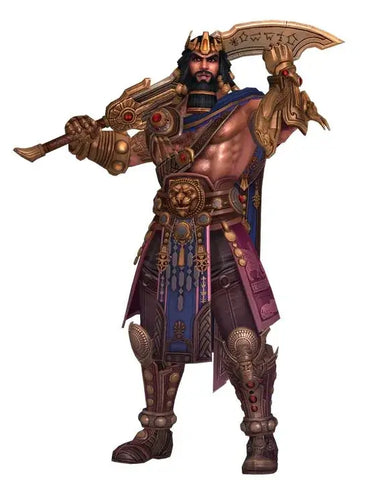
he befriended Enkidu, a character with the body of a man and the legs of a bull, against whom he began by fighting; He fights the giant Humbaba in the land of cedars, incurs the wrath of the goddess Ishtar, whose love he refuses and who, in order to take revenge, raises a celestial bull against him; he ends up going in search of the plant thanks to which the old man becomes young again, discovers it, picks it, and then lets a snake take it away. In short, there would be in him all the characters of a legendary and fabulous character, suitable to strike the imagination.
Theological elaborations
The triads.

With time, the general consensus felt what was embarrassing for the mind this multitude of gods with almost similar characters, but different names, and the priests tried to put order in this chaos. The almost similar gods merged into the one who had the most notoriety; thus Ninlil, Belit, Nana, Ininni, Ninharsag, goddesses personifying the feminine principle, were assimilated to Ishtar.
Among those who remained, a hierarchy was created; they were divided into triads.
- The first triad included An / Anu, the primordial chaos, Enlil / Bel, the demiurge, and Enki / Ea, the providence god;
- The second was Nanna / Sîn, the god of the Moon, Utu / Shamash, the god of the Sun and Raman / Bin, the god of the atmosphere.
Each was joined by a goddess representing the feminine creative principle, which was absorbed by the figure of Ishtar. This division of the Assyro-Babylonian deities into triads was an artificial classification. In spite of everything, the god of the city always remained the principal god of the various cities, and we see in turn almost all the characters of the triads qualified as king of the gods.
Gods and stars.

It is remarkable that, of the Mesopotamian gods, many are astral; some are solar, considered as the sun of such or such moment: the beneficent sun of the morning which dissipates the darkness and the cold of the night, the burning and destructive sun of midday; others personify the god-moon and the star Ishtar.
For the first two stars, nothing but natural, their importance is such that a cult in their regard was fatal for the planet that became Venus, it is customary to invoke the same reason: the star known as of the shepherd appearing the first and leaving the last the sky, shining of a brightness without similar, was certainly noticed of early;
but this assimilation indicates already a work of unification of the pantheon; the sun and the moon were allotted to gods of first order, it was well necessary that the goddess par excellence, principle of fertility, was represented by a star; one had to be satisfied with a planet; for the other assimilations,
Ninurta and the stars of Orion, for example, for the signs of the zodiac, it is a work of priestly school well posterior to the development of the primitive pantheon and which is going to give to the Babylonian mythology a sidereal physiognomy:
Thus Ningirsu / Ninurta was the god associated with the planet Saturn;Marduk, the god associated with Jupiter;Nergal, that associated with Mars; Nabu, that associated with Mercury.
The poliad gods and henotheism.
As has been said, each city had its patron-god or poliad god, and the general pantheon as well as the Babylonian mythology were adapted and reshaped to give this god precedence over the others. The dynasty of Hammurabi thus adopted Marduk as its principal god, the god of the new capital, Babylon.
Marduk’s vogue grew rapidly because of his statist origin; poets, exegetes, and even demarcators set to work, and soon the god of Babylon was endowed with a status, not civil, but divine, that would make him the envy of the older Babylonian gods.
Meanwhile, Assyria, as a state, became conscious of itself and adopted as its god, not only one city, but the whole country: Ashur; it realized a progress which was to give later all its consequences.
Marduk was the great god of Babylon; Ashur became the great god of Assyria. The Babylonian capital having always remained in Babylon, one does not know what would have happened to Marduk in the event of displacement; the god Ashur, on the contrary, followed his people at the time of the various changes of capital which the Assyrians carried out.
There is thus an obvious progress; polytheism remains, but from the mass of gods rises such a personality that a great step is taken towards monotheism, a stage called henotheism. Is this the work of the Semites?
One would be tempted to affirm it, since this progress coincides with their arrival from the land of Amurru in Babylonia and Assyria, since Yahweh little by little also takes the first place in Canaan and Kamosh in the land of Moab; but during this time, Teshub also becomes preponderant in Asia Minor where the Semitic influence was certainly less profound.
We note the persistence of this state of affairs throughout the history of Ashur and Babylon; the next stage is barely glimpsed in the time of the Sargonids; no doubt it is common to give the highest levels of influence to the
The next stage is hardly glimpsed in the time of the Sargonids; no doubt it is common to give the highest titles to Ashur and Marduk, even if one very exceptionally sees zealots of Marduk trying to absorb the whole pantheon into him, saying :
“Ninurta is Marduk as god of planting; Zamama is Marduk as god of battle, Enlil is Marduk as god of dominion and counsel; Nabu is Marduk as god of destiny; Sin is Marduk as illuminating darkness; Shamash is Marduk as god of righteousness; Adad is Marduk as god of rain, and so on” (Cuneiform texts from the British Museum, XXIV, pl. 50) .
The only sketch of monotheism is provided for another god, Nabu son of Marduk, whose favor, we have said, only grew with the cult of his father. On the statue of Nabu, which is in the possession of the British Museum, King Adad Nirari III, who reigned around 800 B.C., had a dedication written which ends thus:
“O man to come, put your trust in Nabu and not in any other god.
It was up to the Hebrew theologians, after the Exile, to proclaim the one god.
Cosmology and cosmogony of Babylonian mythology

Such is the evolution of the divine types in Mesopotamia; but if we have seen under what features and with what functions their worshippers represented them, what moral personality did they lend them? It is here that it is advisable to bring in the information provided by the myths, and what we can deduce from the abundant religious literature that has come down to us.
The birth of the world in the Babylonian mythology.

In the beginning, chaos alone existed; it is represented in the form of a monster: Tiamat, who procreates the first of the gods; these have the offspring that we have seen while studying the pantheon. Tiamat soon repents having created these gods; helped by satellites, monstrous like her, she plots their downfall. The gods have no other resource than to fight her if they do not want to perish, but, in the test, they lack courage.
It is then that, in a solemn assembly, they put their cause in the hands of Marduk, promising him the supremacy over them all if he returns victorious from the fight. Marduk accepts, attacks Tiamat, kills her; he cuts her in two like a fish; with one half he makes the sky, with the other the earth.
Such is the tendentious version which wants to give Marduk the first place; it is an arrangement of the time of the dynasty of Hammurabi; it accommodates an earlier legend supposing the existence of a base to all that exists: the apsû, an abyss of water on which the earth rests, and of a superior sky since the gods meet there before the combat. It is still the Hebrews who are responsible for having conceived a creation ex nihilo, without substratum.
The creation of the human being is the work of a god, Marduk for the Babylonians and before that Êa, Assur for the Assyrians; this creation was done, either that the god kneaded clay in the shape of human figures on which he blew, or even that he watered the earth with his blood.
But when the human was created and had multiplied, the gods regretted their work. Consequently, the gods take the resolution to exterminate humanity; all agree; only one, Êa, takes pity on humanity and reveals to his servant Udnapishtim, the project.
He advises him to build a vessel and to take animals on board; he will thus escape the flood under which the gods will submerge the world. So it was done; Udnapishtim the privileged one went up in the ark; for six days and six nights the storm raged, then calmed down.
The gods heard of the stratagem and reproached it to Êa. But Ishtar, who seemed until now to be oblivious of her role of goddess-generator, also complained about what had been done to humanity, and obtained that grace would be granted to the survivor. The hero, when the boat had run aground on the land uncovered by the receding waters, got out of the ark and offered a sacrifice to the gods, who accepted him.
Such an account, which undoubtedly recalls the time before the creation of the canals when the Mesopotamian soil was periodically ravaged by the floods of the rivers, evokes the episode of the Flood; this resemblance with the biblical text is not unique; it can be continued on other points. Babylonian tablets seem to allude to the fall of man and to a state of innocence in a delightful garden, after the creation, happiness lost as a result of a fault about which we have little information.
These tablets have been the object of various commentaries; they show us once again the lack of unity in Mesopotamian religious conceptions; the prevalent doctrine results from the fusion or juxtaposition of various accounts due to the colleges of priests of the most important cities; we find there, in general, the description of a Golden Age, succeeding the creation and preceding the Flood.
After him, Tagtug, the mortal favored by the gods (he is no longer Udnapishtim), who was able to escape, is placed as a gardener in a marvelous orchard where there are the most diverse species of trees; it seems that the fall of man, that is to say the loss of longevity, is the result of eating the forbidden fruit of one of these trees.
These basic stories of mankind’s rebellion and its punishment by the flood are intended to answer the question that comes to everyone’s lips: why death, why so much suffering on this earth?
Other poems have come down to us, intended to clarify this or that incidental problem and to temper to a certain extent the distressing reality: such is the episode of the search and conquest by the hero Gilgamesh of the plant that gives back youth. But all this literary ensemble is the work of the priesthood; the common people hardly draw their wisdom from it.
When one studies the religious conceptions of the Assyro-Babylonians, one is struck by what an aggregate of disparate and often contradictory beliefs they constitute. What one school of theologians attributes to a god, is the work of another for a different school; one legend resolutely contradicts another.
Or else, while the writings we have just enumerated are intended to explain the why of things, the origin of evil on earth, the vulgar who does not know how to rise so high will invoke causes more within his reach for the misfortunes that may strike him.
The structure of the world in the Babylonian mythology.

“The Chaldeans, Diodorus of Sicily tells us, believe that the earth has the shape of an overturned boat and that it is hollow underneath.
So let us imagine an overturned boat, not a boat such as we are used to seeing, but one of those absolutely round skiffs, which are still usually used, under the name of kufa, in the vicinity of the lower Tigris and the lower Euphrates, and of which the historical sculptures of the palaces of Assyria sometimes offer us a representation such was the figure of the earth for the Chaldean astrologers. Today we would explain the same idea by comparing it to an inverted bowl.
The upper convex surface constitutes what is properly called the earth (ki), the habitable earth or the terraced surface (ki-a), also known by the collective expression of country (kalama). The lower concavity is the earthly abyss (ge); this is where the genii of the earth reside, where hell or the abode of the dead (kur-nu-de, arallu) is located. The umbilicus or central point is the nadir (ur), the foundation of the whole world building, and it is in this dark region that the sun plunges to complete its nightly journey through the black land of shadows.
Above the earth, the sky (anna) stretches out “like a blanket”, studded with its fixed stars (mul), revolving around the mountain of the East (harsak kurra), whose highest peak is the pole star. The azure envelope of the firmament is supported in space by a mysterious and invisible column whose base is on the earth, and the summit at the celestial pole.
The highest point of the sky, the zenith (paku), is not the same as this axis or pole, for it lies immediately above the land of Akkad, regarded as the center of the earth, and the mountain on whose summit the sky pivots, of the fixed stars, is situated to the northeast of that land.
The Assyro-Babylonian astrology later admitted a spherical sky, completely enveloping the earth, both below and above our heads, but, primitively, the firmament was represented as a gigantic dome, whose lower edges rested on the ends of the earth, beyond the great reservoir of waters (zuab), which surrounded the continental surface on all sides, exactly like Homer’s Ocean.
The periodic movements of the planets (lubat), which their Sumerian name assimilates to animals endowed with life, take place below the sky of the fixed stars, that is to say in a middle region between the earth and the firmament.
They move in seven concentric and successive spheres, above which the curtain of the starry firmament extends. Between the earth and the sky is also the zone where the atmospheric phenomena take place, where the winds (im) and storms (im-kab) reside and blow, where the clouds (imdir) circulate, which, torn by the lightning (amaktu) that rises from the planets, let out the rain (a-an) through their gutters (ganul).
Thus, there are three zones in the universe: the sky, the earth’s surface with the atmosphere, and the lower abyss. It is to these zones that the three great gods Ana, Êa and Mulge, mystical names of the supreme triad Anu, Êa and Bêl, respond and preside.
The gods of the planets and those of the zodiacal constellations also have, for their part, their court of spirits and demons (Mesopotamian Demonology), so that each of the great gods is like the leader of an army of demigods whom he sends throughout the world to be the ministers of his almighty will.
In the procession of Raman, for example, we see the gods Nipih-Samsi, whose name means “sunrise”; Nur-Samsi or “sunlight”; Barqu or “lightning”; Is-Birqi “the fire of lightning”; Taranu “the roar of thunder”. There were many others.
Religious morality in the Babylonian mythology

The Assyrian-Babylonian god is a jealous, tyrannical and venal master, similar to the Yahweh of the Hebrews. He created the human for his own use, as the Babylonian Creation Poem says:
“To make the gods dwell in a home that would gladden the heart, Marduk created mankind.”
It is not a question of reward for the human being, but of possible punishment if he does not fulfill his duty. Moreover, these gods, in spite of all the laudatory epithets with which they are praised, are coarse beings; when Udnapishtim, coming out of the ark, offered them a sacrifice, “the gods smelled the odor; the gods like flies gathered over the priest”.
The origin of evil.
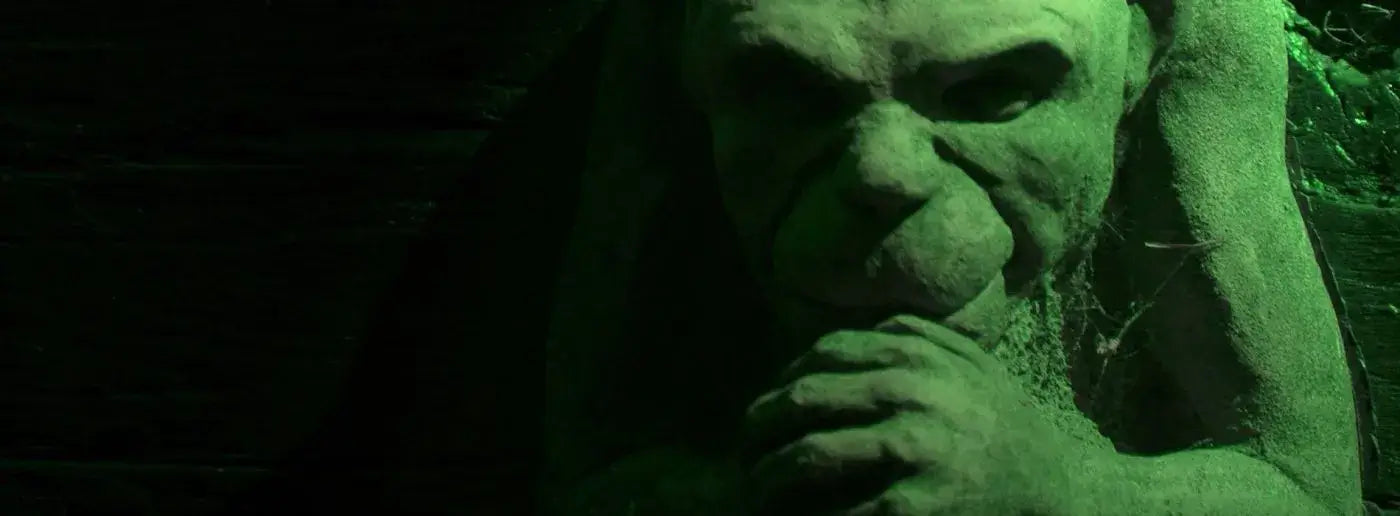
As long as the human fulfills the will of his god, he has the right to his protection, he is “the son of his god”; the divinity even seems to stand in him, or at least to accompany him, a bit like the guardian angel of the Christians. But if he weakens, the god becomes irritated, moves away and then either strikes him or, because he no longer protects him, allows misfortune to fall upon him.
This is the moment when the demons are watching, and the belief in their evil spells has tortured the unfortunate Mesopotamians for centuries. We are surrounded by demons, spirits and ghosts who wait for the opportunity to make us their prey.
What exactly are these evil spirits? Here again, opinions differ; they are the sons of the lower world, the “bile of Ae”; it seems that they must be the distant descendants of Tiamat or of his satellites; they are in any case of infinite variety. There is a series of seven of them, particularly fearsome, whose misdeeds are often recalled in the incantations; but to these demons, innate if one may say so, are added other occasional ones: the revenants.
Their contingent is supplied by those who have died without help and who have not received burial, not because this omission deprives them of great advantages, for the dead, as we have seen, drag themselves through the darkness and dust of the aral (arallu), but because the funeral offerings and the pure water which the deceased so badly needs will not be brought to him. Finally, the living themselves can be a danger; sorcerers, by their evil spells, have the power to force the god protector of the human to give up his place and thus favor his taking possession by a demon; the impure, the reprobate are another danger, their contact can be contagious.
With such a system, there is no possible safeguard, because it is no longer enough for the human not to have angered his god to be assured of tranquillity; he can be the innocent victim of undeserved evil.
It is remarkable that this belief is the logical outcome of the idea of the god as conceived by the Assyro-Babylonians.
Since man has no salvation to prepare for on this earth, and since the notion of a trial in preparation for the hereafter does not exist, it is obvious that in the presence of many cases where the individual is struck down without having a fault to expiate, it is necessary to imagine that the calamity falls upon himself, innocent or guilty without his knowledge. This doctrine dominated ancient Mesopotamia, and the whole life of this people was a long search for the means to avoid the peril which constantly threatened them.
Sometimes even theology came to formulate a doubt about the notion of what is good and what is evil. Thus the poem of the Suffering Just shows us a Babylonian Job stricken in his health and fortune, without having committed any fault, or at least a fault that he knows of, and the poet melancholically concludes that perhaps the human being is mistaken about his duty:
“What is a godly work for the human is a bad deed for the god, what is reprehensible in his heart, is a godly work for his god?”
The righteous man alludes to his enemies, sorcerers or witches, who persecute him and whom he hopes to triumph over. It is only at the end, in a command piece intended to glorify Marduk (for the piece dates from the time of the First Dynasty), that we see the righteous man reinstated in his possessions.
Axiology in the Babylonian mythology
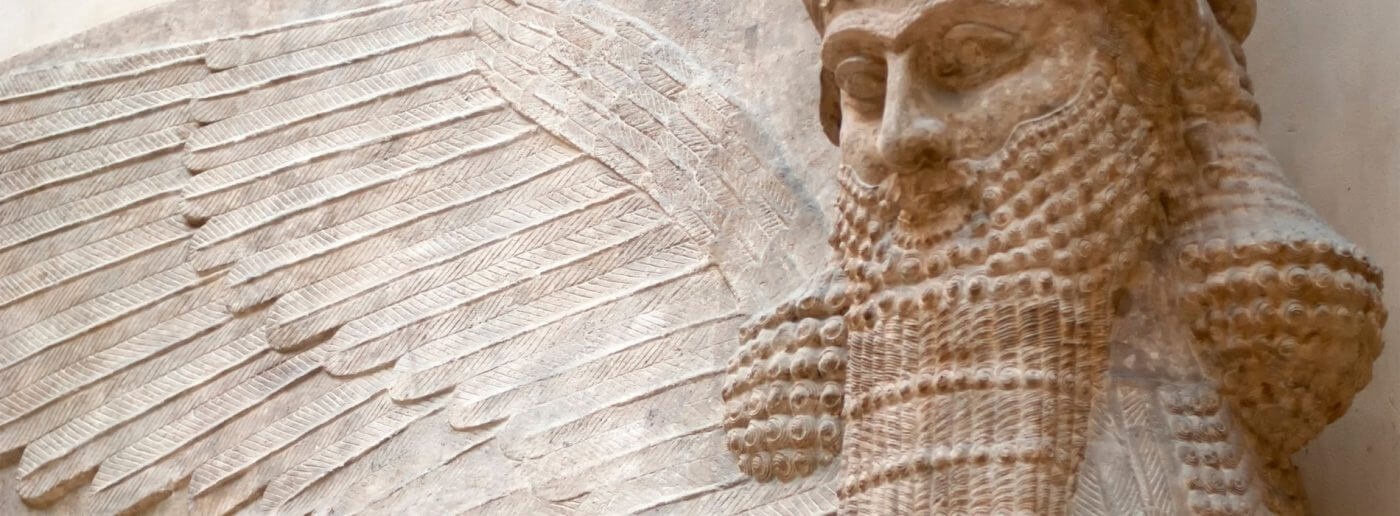
What was the value system of the Assyro-Babylonians? The question has been discussed; it seems that they obeyed precepts of a rare elevation, but as always, the texts which have been preserved for us are a mixture of various traditions. When it is a question of restoring a text from a manuscript that has been copied many times, one must beware of deformations of thought, omissions and changes due to the negligence of successive scribes.
Our fate is not much better with the cuneiform tablets; certainly we have there texts which have not undergone any alteration for thousands of years; but when they were transcribed, they were already very old texts, first transmitted orally, then reproduced many times and very often composed again by the scribe who joined together several pieces into one.
In any case, we can notice that, in all these domains, there are two very distinct currents of thought, one obviously coming from the scholars, theologians, and scientists, the other much more down to earth and which would correspond to the knowledge of the good people.
We are thus led to note that never one of the two genres, especially the superior one, exists in a state of purity, and that the scribes did not feel the need to prune the jumble they were copying; however skilful they were in writing, they were undoubtedly, like the copyists of manuscripts in the Middle Ages, pious people with excellent intentions, but of rather weak culture and critical sense.
A collection has come down to us, enumerating the faults that it is possible to commit; we can deduce from it what are the matters of sin, and it is the most disparate assemblage that one can imagine.
Offenses against morality are side by side with breaches of ritual; murder, theft, adultery, perjury are put on the same level as drinking from an impure cup or spitting into a river. When one of these sins has been committed, what happens?
The god becomes irritated, moves away or even leaves the body of the sinner; the place is free, quickly, the demon who is always watching takes advantage of it and settles down; what will be the consequence? Sometimes the simple “possession” with all its inconveniences, more unpleasant than terrible: noises in the house, wind, whistling, apparitions, but more usually it will be the illness which will translate the taking of possession by the bad spirit.
So that for the Assyro-Babylonians sin equals illness, and the sick person is guilty. It is hardly necessary to recall that this conception was for a long time that of the West; that madness was, until Pinel, considered in this way; and that even today, some affections are still judged by certain religious sectarians as a just punishment leading to reprobation; one thinks of what one has heard, for example, about AIDS.
This etiology of disease dominates the whole of Babylonian medicine, and we find in it most of the notions which we accept today, but transported from the practical and observational plane into the speculative.
Sin creates the terrain; it puts the human being in a state of lesser resistance and receptivity; the demon is equivalent to the microbe; it infects the individual and continues its disorders until it has been expelled. The assimilation of the demon to disease is total, and among these agents we count the fever-demon, the headache-demon, so feared by the Babylonians.
When the sinner is in the power of the demon, it is advisable to remove him from it, but before doing so, it is necessary to know which demon is persecuting him; sometimes identification is easy; it is known from time immemorial that such and such an affliction is the work of such and such a demon; lists of them have been drawn up to which one can have recourse when there is no uncertainty, but this is not always the case. It is then that a practice comes into play in which the principle of self-examination and a sort of confession is found in its seeds.
The Assyro-Babylonians have left us rituals to which reference has been made above, enumerating all the kinds of faults that it is possible to commit; the most famous of these are contained in the incantations known as shurpu and maqlu, which means to burn, for they were accompanied by purifications by fire.
The individual will ask himself if he has committed any of these sins, enumerating them one after the other; even if he does not discover his sin, it does not matter; what is necessary is that he mentions it in his enumeration; so what a luxury in the search. The most unexpected sins are foreseen, so that the believer acquires the certainty that the fault has been included among those he has reviewed.
From this moment on, the course of action is simple; the demon must be expelled, the human must be reconciled with his god so that the latter may take back the place to which he is entitled; this is the matter of exorcism; the sinner will be assisted by a priest who knows which incantation to pronounce in such and such a case; this incantation will be addressed to different gods, but above all to Êa, the master of all wisdom, and to Marduk, the god par excellence.
It begs the divinity to be benevolent, describes the evil that has fallen upon the human being and concludes with the exorcism that must be pronounced at the same time as certain ritual gestures are performed; moreover, in order for this incantation to have all its value, its genesis is recalled; the reciter interposes a sort of explanatory tirade in which we see Marduk go to his father Êa, explain to him the lamentable state of the sinner and ask him what must be done.
Êa reassures Marduk, answers that there is nothing that he himself knows that is unknown to him, and delivers the magic formula. The whole thing is obviously based on the power that the Assyro-Babylonians attribute to the name: to know the name of a thing is to have power over it and, as a consequence, it is the sure way to set the god in motion and to reach the demon.
Originally, the exorcism consisted mainly of a sprinkling, literally and figuratively washing the patient; it was accompanied by a few words; later, it was the formula that took precedence, reinforced by magical operations. When the demon is expelled, it is appropriate to proceed to a solemn reconciliation between the human being and his god; it is the business of the sacrifice.
This one consists in the destruction of a substance in the honor of the god. To this act are linked several intentions, first the deprivation that the faithful inflicts upon himself, then the idea of the pleasure that the god takes in this sacrifice; during the expiatory sacrifice, the victim represents in a way the sinner, takes charge of his fault and substitutes himself for him to atone. The propitiatory sacrifice is part of the usual duties of man towards the divinity; it will be carried out at regular intervals and will be accompanied by the prayer; this one offers two aspects; it is the particular prayer or the public prayer.
The latter is performed in the temples to the sound of music; the former is recited by the worshipper in his home or when visiting a temple. But, in both cases, it is almost always a question of supplications whose scope is rather vague; they are litanies where the greatness of the gods is celebrated and where the place left to the request of the faithful is restricted.
This is a fact common to many religions; while the particular prayer responds to the preoccupations of each one, the public prayers, hymns, canticles, etc., have a much more general character of glorification of the divinity; it is up to the priests to announce for what intention they will be uttered.
Rituals in the Babylonian mythology
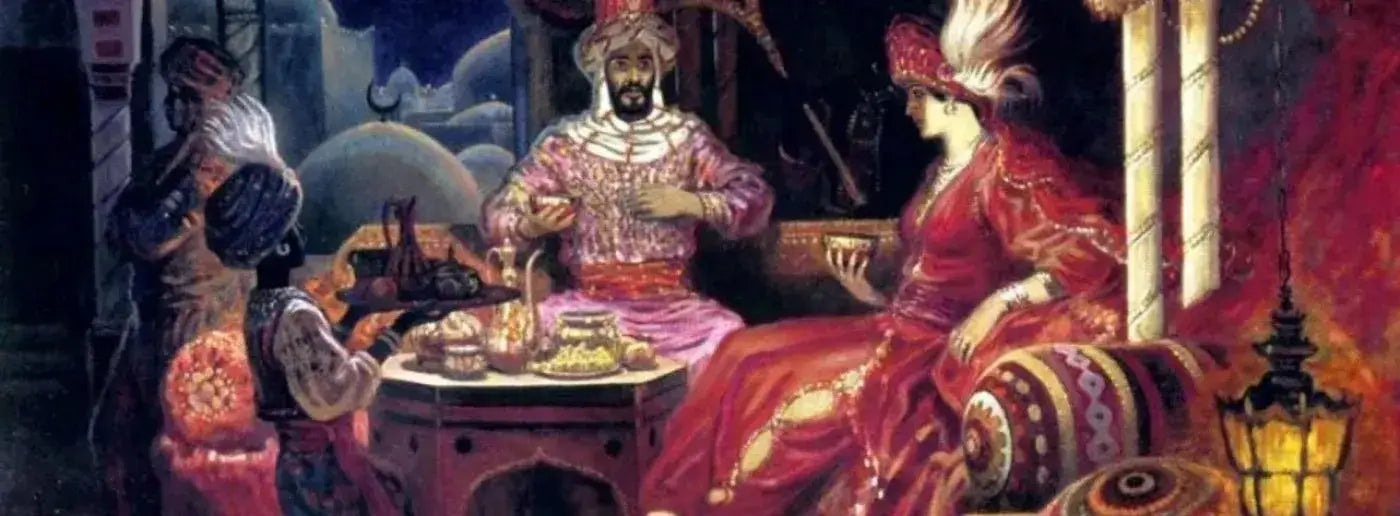
For the Assyro-Babylonians, so anxious not to displease the divinity, there are a thousand ways of hearing the celestial will; this is what divination is used for. This was pushed to its last degree of perfection by the priests, and the results of their innumerable observations have reached us.
The whole universe is an open book, the only thing is to know how to read it. Astrology, invented in Mesopotamia, is a way to know the will of the gods by scrutinizing the stars.
But the simplest way, for the gods, to manifest their will is to appear and to declare it; but it is also the rarest; most often it is during the dream that the celestial messages are transmitted: the patesi Gudea (XXIII century) and Assurbanipal king of Assyria VII century), bring us examples; one receives in a dream the order to build a temple, the other that to run over the enemies, but most often the dreams are any and it will be appropriate to interpret them.
The appearance of certain animals and their behavior in certain places give certain omens, for example if dogs enter a palace or a temple.
Natural or provoked phenomena are subject to consultation, for example the color of the water in the river, the way the flame of a sacrifice burns. Illnesses themselves become signs, not only for the patient, which would be prognosis, but for the health of other people or for the affairs of the state. Birth defects, either in humans or in animals, have significance.
If “the little one has no right ear, the king’s reign will come to an end and the palace will be destroyed; if he has no left ear, a god will hear the king’s prayer and he will be victorious over the enemy and will destroy his palace,” etc.
But the method par excellence, the one that made its way to Greece and Rome, is the examination of the entrails of the victims and more particularly the liver.
For the Assyro-Babylonians, it is the liver that is the seat of life, not the heart, and during a sacrifice, the liver of the victim becomes a mirror in which the will of the god is reflected in a conventional language.
By dint of meticulous observations, the priests came to know all the possible peculiarities of this organ, either in itself or in its relations with its neighbors, and gave them an interpretation.
Not only did they transmit the results of their observations in tablets intended for the training of future diviners, but we have even found terracotta livers (sheep livers according to their shape), divided by lines into small boxes, with observations inscribed in these boxes, to serve as a study for the priests.
The alterations or modifications were considered either for the surface of the liver itself, or according to the relations of the organ with the neighboring viscera; the examination of the intestines themselves also provided omens.
The general mechanism of these interpretations is that, if a sign is considered good, if it is located on one side of the organ, the right side for example, it is bad on the left side; if a sign is good for the one who questions, it is considered bad for his opponent.
Starting from signs once observed and interpreted in some way, the diviners have constantly enriched their repertoire, and by deduction foreseen extreme cases which only rarely, if ever, come true; they have thus made divination a dense science which always provided an answer, whatever the occurrence. We have here all the elements of a developed and meticulous cult; undoubtedly all this arsenal of conjurations, prayers and sacrifices, was not implemented in every case of life.
It was up to the priest to choose between them all, but there was for each circumstance a rigid observance of pious practices and minimal purifications, of which the laws of Deuteronomy give us an idea; these practices could rise, especially for people of high status, to the degree of complication that we have seen; but they could be very simple, on the contrary, in the population.
Ceremonies in the Babylonian mythology.
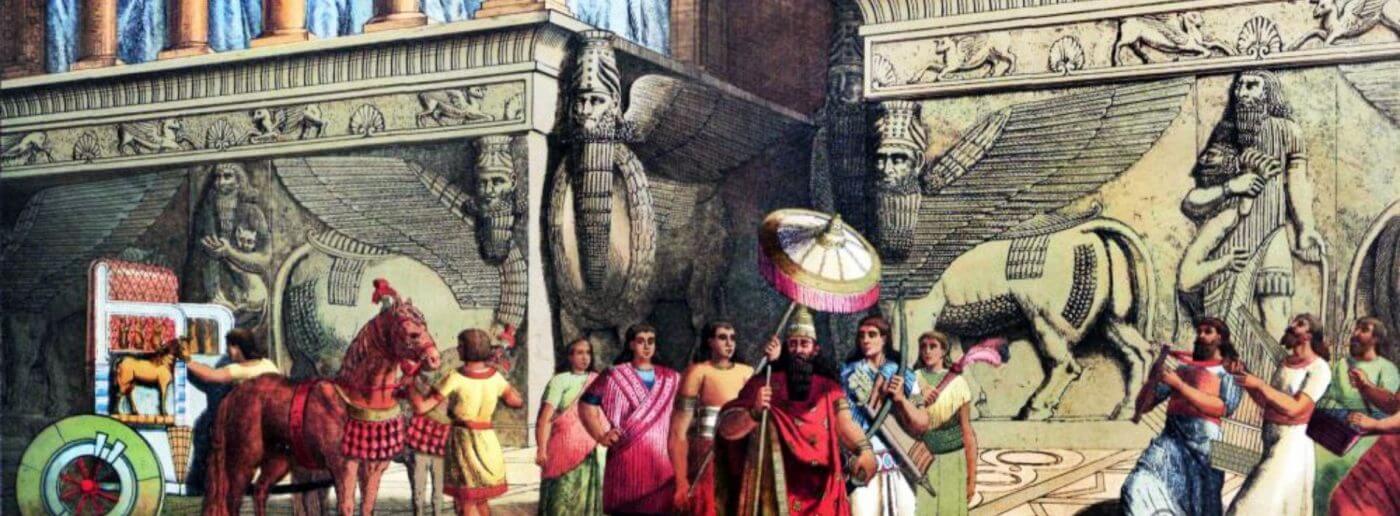
To assure all these services, to guide and to censure the faithful, it was necessary to have a considerable staff of priests, in fact they had to be innumerable, according to their functions, one can classify them in great categories: the ashipu, who is especially in charge of the exorcisms and purifications necessary to deliver the human being from the demon which possesses him, the bârû, whose function is to consult the divinity, especially by means of the examination of the liver, and the singers, characters essential to the ceremonies (The temples and the worship).
Sacrifices in the Babylonian mythology.
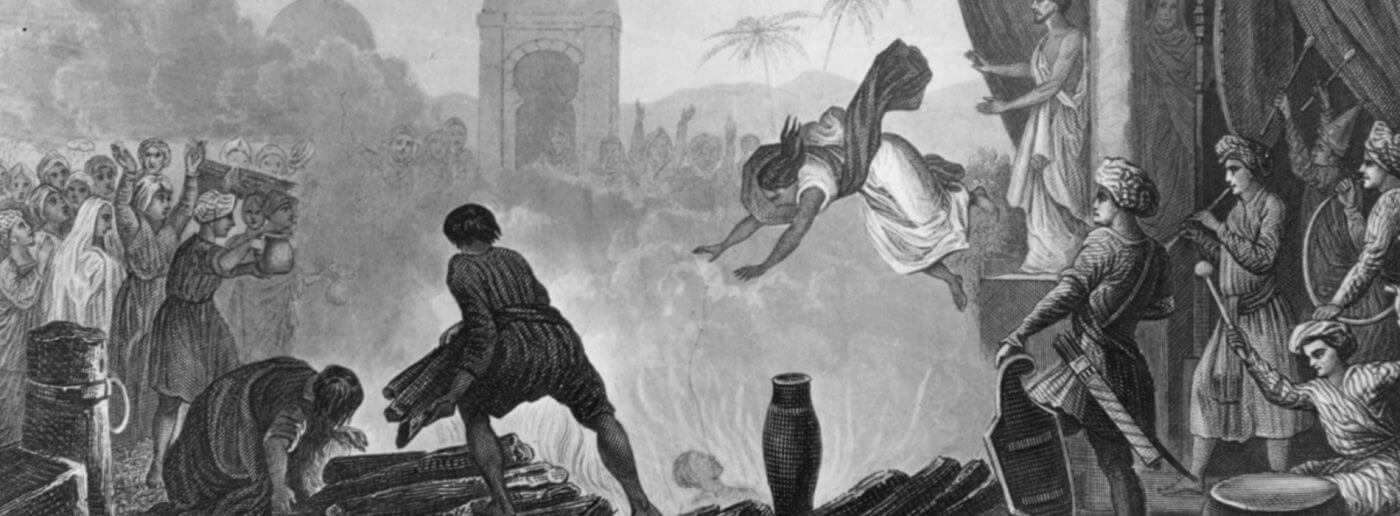
The ritual of the sacrifices differed according to the favor to be obtained. If it is a question of reconciling a faithful with his god, the priest prepares eight pyres covered with odoriferous branches in front of the statues of the eight gods; behind each pyre is a table supporting four jars of sesame wine and thirty-six loaves of unleavened bread on which honey, salt and butter have been poured.
The priest then immolates eight lambs (the animal most commonly offered along with the kid); he takes the pieces that are rightfully for the god, that is, the right leg, the kidneys and a roast that will be consumed by fire. All this is accompanied by ritual gestures, sprinklings and murmurs of incantations. As all work deserves reward, the priest takes for his part, as we learn from a cult tablet discovered in Sippar and dating from the 9th century BC: certain parts of meat, offal, a pot of sauce, etc.
The worshipper, whom the Akkadians called the “master of the sacrifice”, was undoubtedly entitled to the remaining parts and to eat them in a sort of communion with the god.
Tablets of accountancy of the temples make us suspect the importance of the sources which the sanctuaries had, and we know in addition what prodigious quantity of foodstuffs was allocated to the sacrifices; only in Uruk, it was necessary daily for the god Anu, to whom one offered four meals per day, more than sixty sheep and five hundred and forty liters of grain.
Funeral rites in the Babylonian mythology.
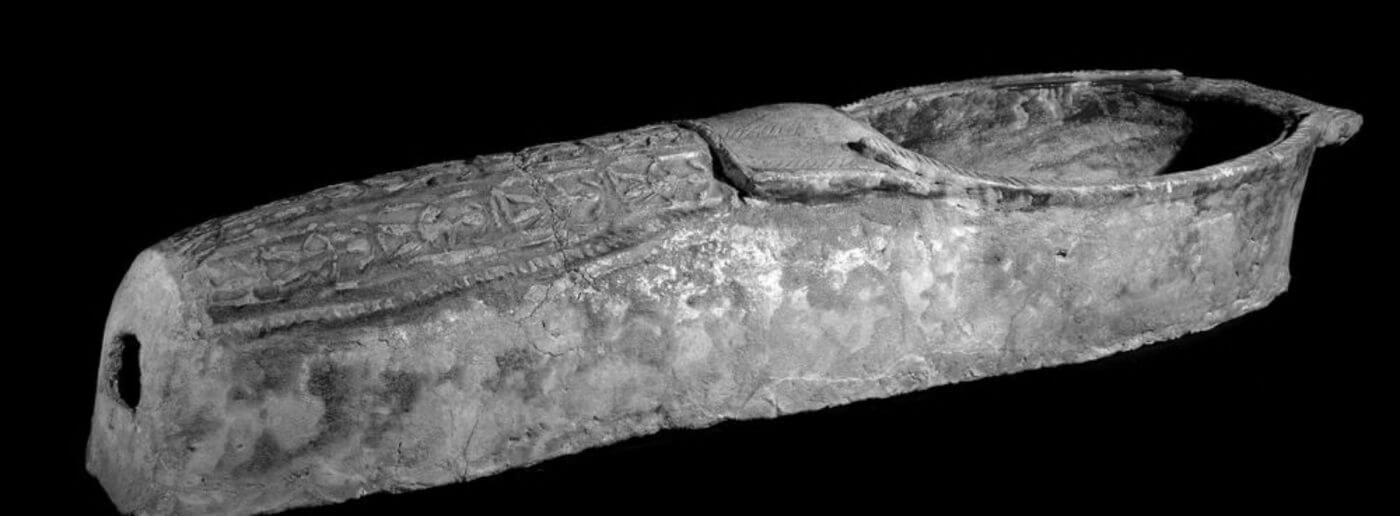
It seems that the Mesopotamian funeral rites were felt of this negative conception of the after-life (Death and the cult of the dead in Mesopotamia); no sumptuous tombs; the dead was, at the origin, buried naked in the ground, then it was covered with mats of reeds and enclosed in kinds of barrels out of terra cotta, holding place of beer or deposits in vaults.
With him were arranged vases containing food and drink; at the low times, and undoubtedly with the imitation of Egypt, some ornaments and models of the familiar objects of the deceased were added there. (G. Contenau).
